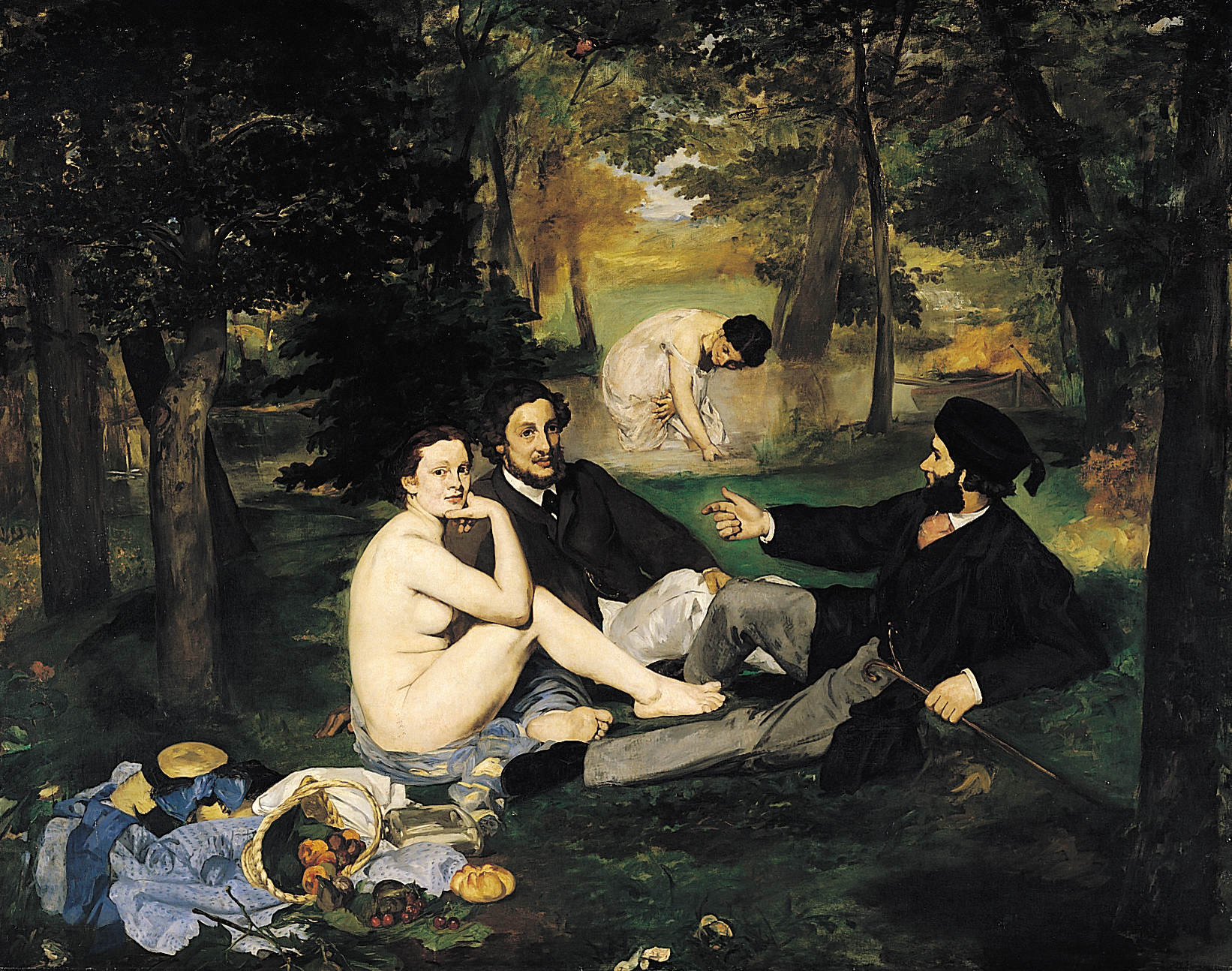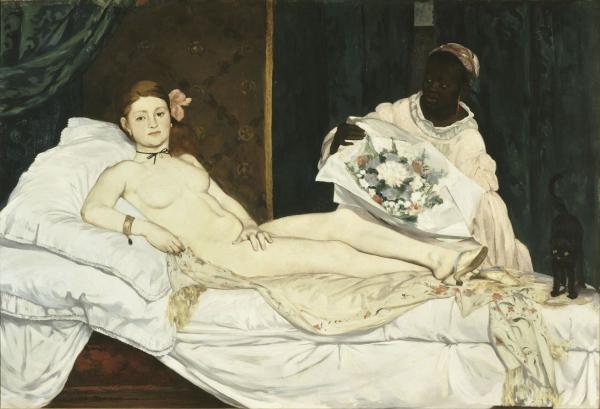
Degas vs Manet: the clash of the titans

About the Manet/Degas exhibition which runs from 28 March to 23 July at the Musée d'Orsay in Paris.
The face to face is sublime. It is the event, for the magazine Connaissance des arts. The Manet-Degas exhibition opens on 28 March at the Musée d'Orsay in Paris, bringing together the works of two famous artists, Édouard Manet (1832-1883) and Edgar Degas (1834-1917), who left their mark on the history of 19th century art through their daring but also "I love you-I hate you" mode. They were indeed two of the key players in the new painting of the 1860s-80s. As Manuel Jover writes in Connaissance des arts: "If confrontations between artists are sometimes misleading, the dialogue here seems fully justified between two great painters who lived in the same city, Paris, at the same time, in the last decades of the 19th century, who knew and appreciated each other quite well, even if their friendship was cooled by certain differences, and who above all shared the same great aesthetic adventure, the advent of what the critic Louis-Emile Duranty called the new painting. A rather vague term that designated "the heirs of Realism who were open to the themes of modern life and committed to forging a plastic language in keeping with their time".
This exhibition, which brings together the two giants of painting in the light of their contrasts, forces us to take a new look at their real complicity. It shows the heterogeneous and conflicting aspects of pictorial modernity and reveals the value of Degas's collection, where Manet took a larger place after his death. Of course, there is no shortage of analogies concerning the subjects they imposed (from horse racing to café scenes, from prostitution to the tub), the genres they reinvented, the realism they opened up to other formal and narrative potentialities, the art market and the collectors they managed to tame in order to better convince them to buy their works of art for sale outside the Salons, the places (cafés, theatres) and the circles, whether family (Berthe Morisot) or friendly, where they crossed paths. And the women, who occupy a predominant place in their paintings. "Each of them enjoyed exploring the feminine sphere, right down to the intimacy of body care, grooming and clothing details," notes the journalist from Connaissance des Arts.
Before and after the birth of Impressionism, on which the exhibition takes a fresh look, setting the record straight on the involvement of each of them in the movement, what differentiated or opposed them is even more striking. With their dissimilar backgrounds and temperaments, Manet and Degas did not share the same tastes in literature and music, for example. Their divergent choices in terms of exhibitions and careers cooled, from 1873-1874, the budding friendship between them, which was strengthened by their common experience of the 1870 war and the aftermath of the Commune. One cannot compare the former's quest for recognition with the latter's stubborn refusal to use official channels of legitimisation. And if we consider the private sphere, once the years of youth are over, everything separates them. The dandy Manet's very open, and soon quite brilliant, sociability and his domestic choices are matched by the austere Degas's secret existence and his restricted entourage.
Known for its impressive collection of 19th century art, the Musée d'Orsay was also able to bring in many paintings from the United States, thanks to a partnership with the Metropolitan Museum of New York, thus bringing together for this exhibition more than 150 works by the two artists, including paintings, drawings, prints, photographs and sculptures. It's a real festival. A giant art gallery. The exhibition offers a truly splendid opportunity to admire the works of two artists who combine the solidity of a classical training with the modernity of an era and a revolutionary pictorial audacity under the same roof until 23 July, before they move to New York from 18 September 2023 to 27 January 2024.
|
Le Déjeuner sur l'herbe - Manet |
Olympia - Manet |
The section devoted to Manet includes some of his most famous paintings, including "Le Déjeuner sur l'herbe" and "Olympia". These two works caused a great deal of controversy when they were first exhibited, due to their unexpected subjects and innovative painting technique. Visitors can also admire Manet's drawings and engravings, which show his mastery of composition and space. It is clear that it is a huge misunderstanding to have designated him as the leader of the Impressionist movement, on the pretext of his plein air painting, his clear palette and his abbreviated pictorial language, and he himself denied this affiliation! He will always stubbornly refuse to participate in the group's exhibitions. "He was in search of official recognition, that provided by the Salon, where he exhibited several times," explains Manuel Jover. "Moreover, nature, landscape and the rural world were not his concern. Unlike the Impressionists, he prefers the lights of the city, the places of urban sociability, large boulevards, cafés, crowds, salons and boudoirs where women reign...".
If Degas, who always worshipped Ingres, appeared to be one of the most committed and militant painters when the collective exhibitions of the Impressionist group were set up from 1874 onwards, it was only because he was fiercely in favour of an independent strategy with regard to the official bodies, the Salon, the commissions... Instead of calling them Impressionists, he would have preferred to call them intransigents to designate the group of independent artists to which he belonged. "Like Manet, Degas favoured the figure, the body, whether nude or clothed and in a social situation, and not the landscape like Monet, Renoir, Pissarro or Sisley," notes the journalist from Connaissance des Arts. "He relies on the solidity of drawing and form, not on the study of natural atmospheres and the decomposition of light into colours. In many ways, this pillar of the movement is the opposite of the concerns of his comrades. The result is a certain vagueness in his artistic situation and in the perception of his art. In fact, Degas is simply unclassifiable.
Among the works presented here that most moved Manuel Jover, "we note the portraits of Manet by Degas, who knew so well how to capture the brilliant personality of his friend. But also those that constitute flagrant points of encounter, such as The Plum by the former and Absinthe by the latter, which show women sitting at a café and both ooze the same bitter solitude.
Visuals :
- Edouard Manet - The Luncheon on the Grass in 1863
RMN-Grand Palais (Musée d'Orsay) / Benoît Touchard / Mathieu Rabeau
- Edouard Manet - Olympia in 1863
Musée d'Orsay, Dist. RMN-Grand Palais / Patrice Schmidt
- Edgar Degas - Young Woman with an Ibis, 185758
The Metropolitan Museum of Art, New York, United States
The Metropolitan Museum of Art







































































